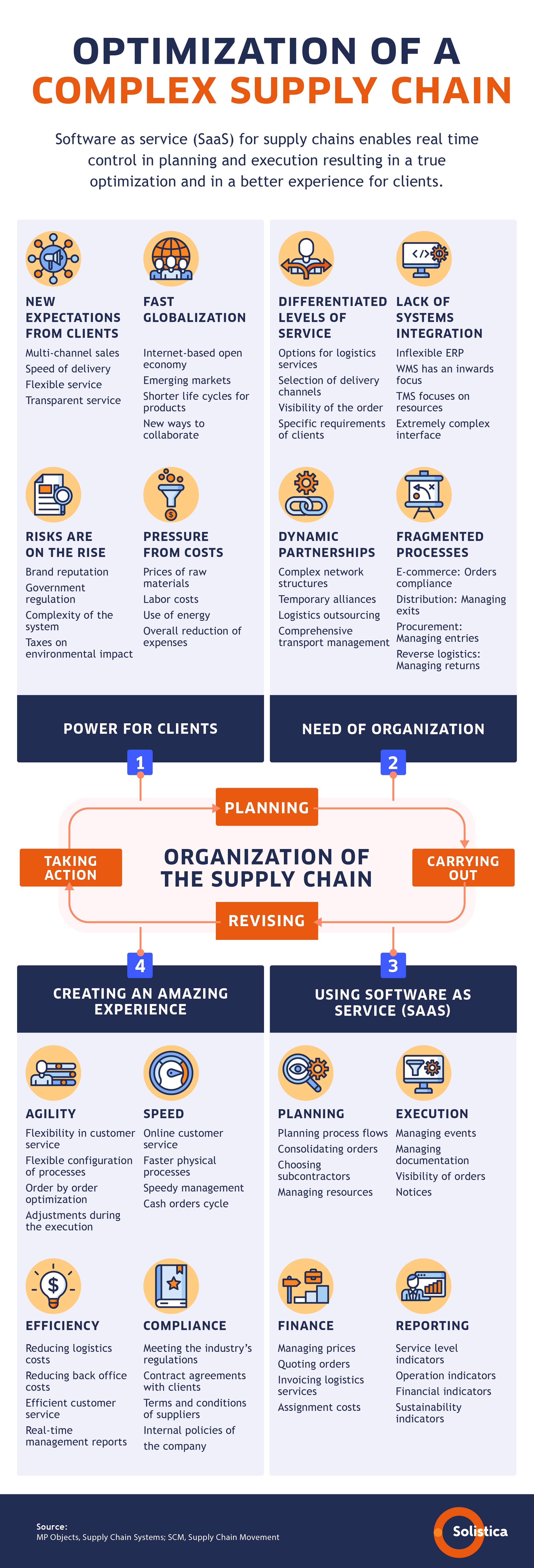Supply chains around the globe are exposed to regulations and changes in rules, politics, weather, terrain, and infrastructure – such as roads and highways – and to the risks these represent that could potentially cause delays or interruptions. In other words, risk has many ramifications: financial, operational, social, and so forth.
Therefore, risk and uncertainty have been thoroughly studied in terms of how supply chains behave, and they have evolved because it is hard to measure threats and risks since they are much more than a single event.
However, from a realistic and pragmatist point of view, when our goal is to offer clients a better and faster response, risk is not the only factor to consider when making decisions during uncertain times. Focusing on the characteristics of systems, such as the efficiency of processes, the capacity to respond, vulnerability and resilience has become a trend to help make better predictions. Considering these issues in our decision-making process helps us mitigate risk.
Time is another essential factor. In fact, risk and time are two sides of the same coin since time transforms risk and this would not exist if there was not a tomorrow. In other words, the future is the playing field. To try to have any semblance of control over destination and time we tend to work with the probability and seriousness of unfavorable effects so we can manage the ability of systems to recover after experiencing an unfavorable event.
Risk joins Change
Beside the risks already mentioned, we must also account for changes in technology, in the way we conduct business and in society at large, such as how consumers evolve and demand more, greater assortment of products, and longer and more complex supply chains, issues that have increased uncertainty in the markets.
To face these changes, companies have been forced to change too so they can deal with variations in supply and avoid interruptions in the supply chains.
How to lower uncertainty
In terms of supply chains, uncertainty means changes in fulfillment and profitability caused by unpredictable events and in how difficult it is to make decisions when there is a lack of unambiguousness in the supply chain, meaning we have no way of knowing the status and impact of the actions we may take.
By events, we may refer to earthquakes or hurricanes, a last-minute order, delays in delivery by suppliers, or breakdowns in manufacturing equipment, to mention just a few examples.
Even though models to assess external risk may be complex, they can use many public information sources. There are also tools and data analysis – readily available for companies – that can help us lower the internal uncertainty. For example:
Inventory
We can use inventories as a cushion to deal with unforeseen events and abrupt changes to the offer and demand.
Supply chains must respond to real demand, keeping a prominent level of service for clients. However, the best option is for us to continuously optimize the inventory based on a solid forecast. To do this, the optimization pattern must not only deal with the demand and its uncertainty, but also with the uncertainty in the offer since, as mentioned before, delays in deliveries by suppliers or variations in quality happen frequently.
To achieve a good optimization model, we must keep asking ourselves what the reason for the inventory to be out of synch with the supply chain is, dropping below or going above the optimum levels. By discovering the reasons, we also uncover the uncertainty our optimization model must deal with.
The next step would be to identify the data that backs our model up. We may find this information in our ERP or MES systems; late deliveries and quality issues are good examples of this.
Maintenance
Companies should be aware of Murphy’s Law because "Everything that may go wrong will go wrong at the worst possible time” is certainly true.
In terms of production, we must prevent breakdowns from happening during the times when loads are the highest, thus avoiding problems in supply, delivery, and customer service.
Companies must have preventive maintenance programs capable of foreseeing and preventing breakdowns due to wear. Predictive maintenance (for example, using sensors to get information about the equipment, process, or materials) is the final component of preventive maintenance; it helps us improve the performance of machines and equipment.
This helps us automate processes, alert operators about unexpected and notable events, and gather data to monitor and measure the performance of machines. If we want to go further, by thoroughly examining the sensors’ data in relation to the historical breakdown information we have, we can reveal more complex patterns; therefore, we may detect issues earlier by reacting to the readouts of several sensors instead of reacting to the readout of a single sensor.

Quality
Not knowing if the products we manufacture will pass the quality tests is another factor of uncertainty since disassembling or wasting the components or finished products that fail to meet the necessary quality is costly in several ways and puts additional pressure on the manufacturing line.
On the one hand, there is quality as experienced by clients, which we may understand by the claims and comments on social media, and which must be addressed. However, it is best to find the problems in our own house.
To do this, it is essential that we find the fundamental reasons for low-quality manufacturing. Depending on available data and the particular production line, this may require statistical analysis, predictive analysis, and even artificial intelligence. Otherwise, we may install additional sensors in the production line to collect the missing data.
To sum up, companies must use all the available external data to better assess external uncertainty and analyze their own internal data to lower the costs associated to internal uncertainty, making the best use of, and combining, the analytic competencies with the knowledge of the manufacturing process itself. The better we understand the present, the better we may foresee the future.
 *This blog was originally published on January 14, 2022 and modified on July 13 2022.
*This blog was originally published on January 14, 2022 and modified on July 13 2022.
